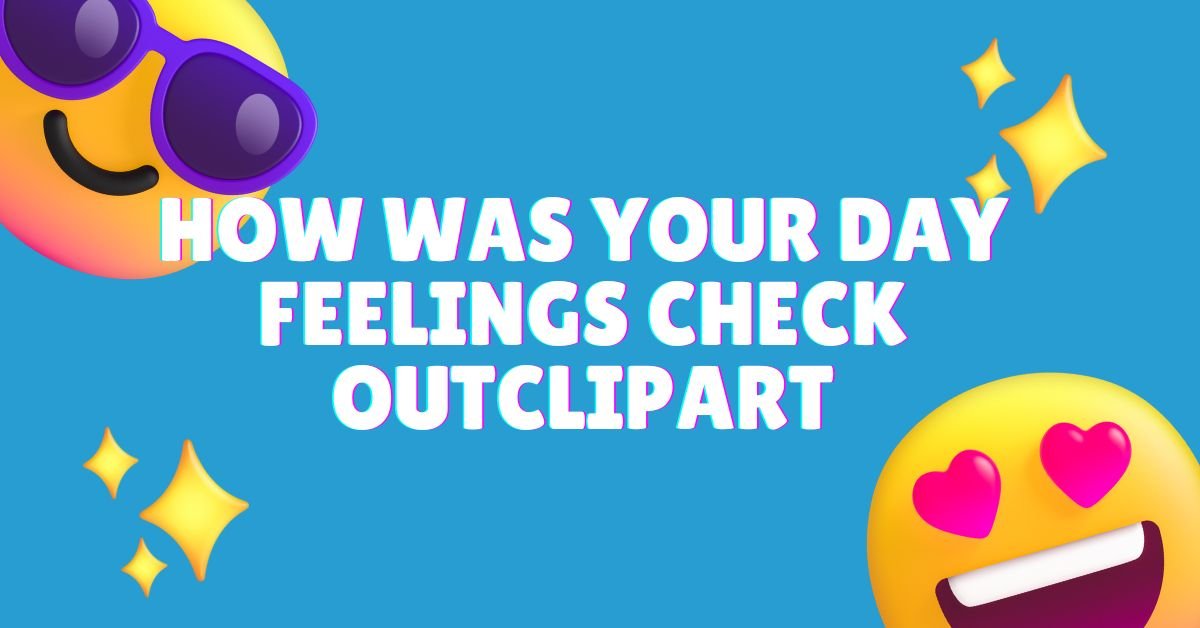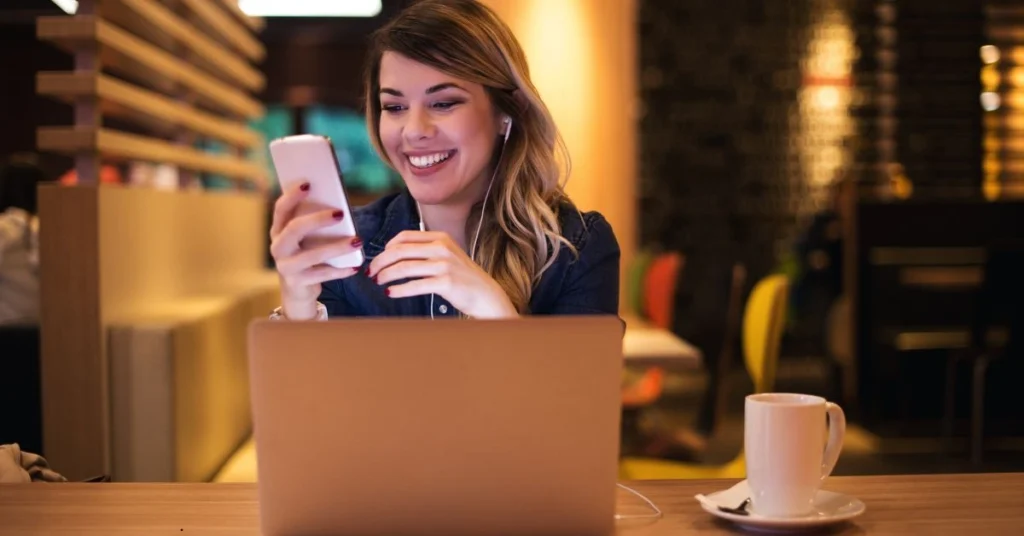In today’s fast-paced world, checking in on our emotional health is often neglected, yet it’s a crucial part of our mental well-being. The phrase “how was your day” is a common way to begin a conversation, but what if it became a tool to assess our emotional landscape? Combining this idea with the visual appeal of clipart opens up a creative approach to tracking and understanding feelings throughout the day. This article delves into the importance of emotional check-ins, how to use “feelings check out clipart,” and why it’s an effective method for fostering emotional intelligence in various settings.
The Importance of Daily Emotional Check-ins
Emotions play a pivotal role in shaping our experiences. Whether we’re aware of them or not, they influence how we react, communicate, and make decisions. Daily emotional check-ins serve as a pause, allowing us to reflect on our internal state and process feelings that might otherwise go unnoticed. By regularly asking “how was your day?” and pairing it with feelings-focused visuals, we open the door to understanding ourselves better.
Emotional check-ins help with:
- Building emotional awareness.
- Reducing stress and anxiety by processing feelings early.
- Strengthening relationships through open communication.
- Promoting mental well-being by addressing emotional concerns proactively.
How Clipart Enhances Emotional Reflection
Visuals have a unique way of communicating feelings that words sometimes cannot. Clipart, specifically designed for feelings check-ins, uses simple, relatable images to depict emotions like happiness, sadness, frustration, excitement, and more. These visuals make it easier to identify and name emotions, especially for people who may struggle with verbalizing their feelings, such as young children or those with communication challenges.
When combined with the question “how was your day?” the clipart can be used to reflect on emotions, either personally or within group settings, creating a non-threatening way to discuss feelings. This can be particularly effective in classrooms, therapy, or even at home with family members.
Using Clipart for Self-Reflection
Feelings check clipart can be a fun and engaging tool for self-reflection. By looking at a series of emotional clipart icons at the end of the day, individuals can identify which picture best represents how they felt throughout the day. This act of self-identification is empowering as it helps to build emotional literacy – the ability to recognize and label one’s emotions.
For example:
- A smiling face might represent a joyful day filled with accomplishments.
- A frowning face could signify disappointment or sadness.
- An image with raised eyebrows could indicate surprise or shock at an unexpected event.
By associating these images with personal feelings, individuals can create a more nuanced understanding of their emotional journey throughout the day.
How to Introduce “How Was Your Day Feelings Check Out Clipart” to Others
Introducing the concept of a daily feelings check with clipart can be incredibly beneficial in group settings. For instance, teachers can start their classroom discussions by asking students to choose a clipart image that reflects their current mood. This not only encourages emotional self-awareness but also fosters a sense of community and empathy as students learn to understand and respect the feelings of their peers.
In workplaces, team leaders might use feelings check clipart during meetings to gauge the emotional well-being of the team. By recognizing and addressing feelings early, tensions can be eased, and a more positive work environment can be cultivated.
The Therapeutic Benefits of Feelings Check Clipart
Feelings check clipart also offers therapeutic benefits. Counselors and therapists often use visual tools to help clients articulate their emotions, particularly those who find it hard to put feelings into words. Clipart can serve as a gentle prompt to discuss how the client felt during the day or throughout a specific event, making it easier to identify underlying emotional triggers.
Creative Uses for Feelings Check Clipart in Everyday Life
Feelings check clipart is not limited to formal settings like classrooms or therapy sessions. It can be adapted for everyday use at home, in personal journals, or even in social media conversations. Here are some creative ways to integrate it into daily life:
- Journaling: Add a clipart image to your daily journal entry that represents how you felt. This can make journaling more engaging and give a visual snapshot of your emotional state over time.
- Family Discussions: Use clipart during family meals to encourage open conversations about how everyone’s day went. Each family member can pick an image that represents their feelings and discuss why they chose it.
- Social Media: Share a clipart image that reflects your mood with your friends. This can spark meaningful conversations and support from others.
Why Emotional Intelligence Matters
Emotional intelligence (EI) is the ability to recognize, understand, and manage our emotions as well as the emotions of others. Developing EI leads to better communication, stronger relationships, and improved mental health. Using tools like “how was your day feelings check out clipart” can be a stepping stone towards enhancing EI in both personal and professional life.
When people take the time to check in with their emotions, they become more attuned to how they are feeling and how those feelings impact their thoughts and actions. This self-awareness is the foundation of emotional intelligence and plays a crucial role in conflict resolution, empathy, and decision-making.
How Clipart Fits Into the Modern Digital World
In the age of digital communication, visuals are becoming increasingly important. By using clipart, people can create a visual language that transcends cultural and linguistic barriers, making emotional expression more accessible to a global audience.
Creating Your Own Feelings Check Clipart Collection
For those who want to take their emotional check-ins to the next level, creating a personalized clipart collection can be a fun and rewarding project. Whether you’re an artist or simply enjoy doodling, designing clipart that resonates with your unique emotional spectrum can make the process of reflection even more meaningful.
You could draw a range of expressions, from subtle moods like “pensive” or “optimistic” to more intense feelings like “overwhelmed” or “ecstatic.” The key is to ensure that the clipart you create reflects the range of emotions you experience in your daily life.
The Role of Clipart in Children’s Emotional Development
For children, learning to recognize and express emotions is a key developmental milestone. Feelings check clipart can be an invaluable educational tool in this process. By associating emotions with simple images, children can learn to name and express their feelings more effectively. Teachers and parents can use clipart as a conversation starter, helping kids develop emotional literacy from an early age.
Moreover, this method allows children to communicate their emotions without fear of judgment or misunderstanding. By pointing to a specific clipart image, they can convey complex emotions in a simple, visual way.
How Was Your Day Feelings Check Out Clipart: A Positive Step Towards Mental Wellness
In conclusion, the “how was your day feelings check out clipart” tool is more than just a fun way to look at emotions – it’s a powerful tool for fostering emotional intelligence, self-awareness, and mental well-being. Whether used personally or in group settings, clipart provides a simple, accessible way to reflect on and communicate feelings.
Conclusion
Incorporating “how was your day feelings check out clipart” into daily routines provides an innovative, accessible way to stay connected with emotions. Whether for personal reflection or group interaction, this method supports emotional growth and mental well-being in a light-hearted yet effective manner. By embracing visual tools to express and understand emotions, we take an essential step toward a healthier emotional life.
FAQs
How can clipart help with emotional check-ins?
Clipart simplifies the process of identifying emotions by offering visual representations of feelings, making it easier to reflect on and express emotions.
Who can benefit from using feelings check clipart?
Anyone can benefit, but it’s especially useful for children, people in therapy, and those who struggle to verbalize their emotions.
Can I create my own feelings check clipart?
Yes, creating personalized clipart is a fun way to engage with your emotions and make the process more meaningful.
Is feelings check clipart effective in group settings?
Yes, it encourages open communication and emotional awareness, which can strengthen relationships and foster empathy in group environments like schools or workplaces.
What emotions are typically represented in feelings check clipart?
Common emotions include happiness, sadness, frustration, surprise, excitement, and anger, but they can be tailored to include more nuanced feelings.
How often should I do an emotional check-in?
Daily check-ins are recommended, as they help track your emotional well-being over time and prevent unresolved emotions from building up.











